JARS v64n2 - Hybridizing Rhododendrons in the Shadow of the Blue Ridge Mountains, North Carolina
Hybridizing Rhododendrons in the Shadow of the Blue Ridge Mountains, North Carolina
Stan Southerland
Chapel Hill, North CarolinaOne of the best kept secrets in East Coast hybridizing lies in the shadow of the Blue Ridge Parkway just south of the idyllic town of Mount Airy, North Carolina. Previously Mt. Airy's main claim to fame had been that it was the hometown of the TV/Motion picture actor Andy Griffin. The mythical town of Maybery featured in the 1960s TV show "Andy of Mayberry" was based on Mt. Airy. This show is still popular in syndication.
This area can now claim someone who I believe to be one of the better hybridizers in the southeast, if not the country. He is certainly one of the least known. That would be Delbert Brim.
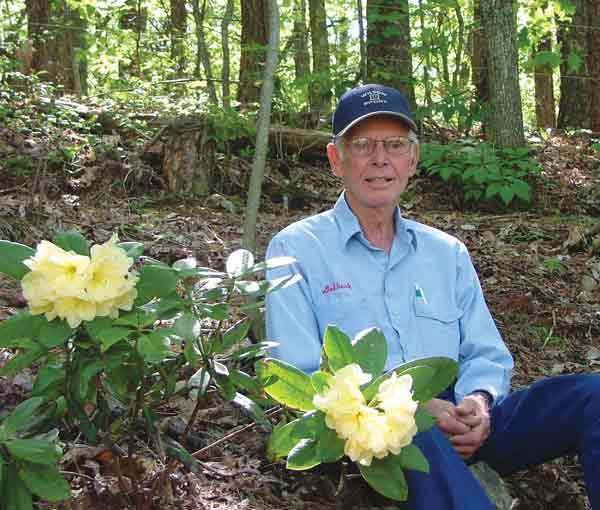
|
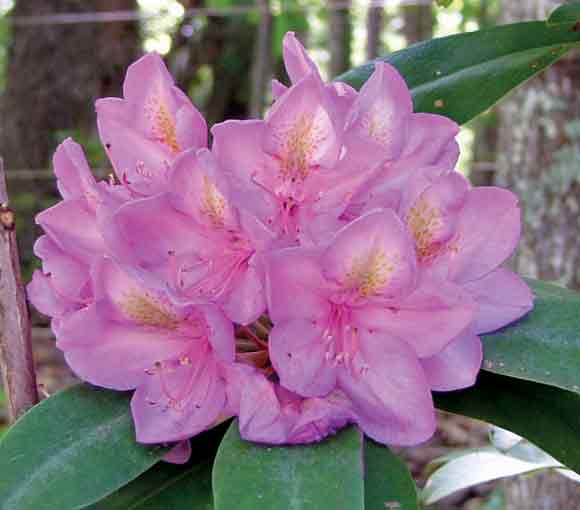
|
|
|
Delbert Brim with unnamed yellow hybrid
Photo by Stan Southerland |
Best purple with yellow blotch.
Photo by Stan Southerland |
The Blue Ridge Parkway can be seen from Brim's large group of cold frames and outdoor growing area. In his nursery he creates and grows Rhododendron hybrids with colors that possibly rival those grown on the west coast. The plants have flowers that boast various shades of yellow, orange, large blotches and stripes, and of course he has plants with deep purple flowers with blotches. He also has some reds, but until this last year these have not been a primary focus. "I don't know how many colors I've got," exclaimed Brim as we walked around his garden.
Brim, now 77, worked delivering milk for Flavorich (a local Diary) for 27 years, but has been raising rhododendrons and azaleas for thirty years. Some of his first sales were from the back of the milk truck. "He'd sell people both milk and flowers," his wife Betty said with a laugh. "Used to be people would come and want one. Now they come and want truckloads." Brim's prices are not a discouragement either, as he charges about $15 a plant. While once he used to advertise, now nearly all his business comes from word of mouth, from people that have heard about his plants from someone else. His nursery only carries rhododendrons, evergreen azaleas and deciduous azaleas.
He first became interested in rhododendrons when he covered a grassy bank near his house with them, since the bank was too steep to mow safely had it been grass. The plants did very well, sparking his interest in the genus. Thirty-years ago, there were not many places close by that were selling Rhododendron so Brim had to search for suppliers of both plant material and cultivation information. ARS chapters that could offer support were also were a good distance away. He first joined the Southeastern Chapter of the American Rhododendron Society in Western North Carolina located near Asheville, North Carolina, and later the Piedmont Chapter located in Charlotte, which was much closer to Mt. Airy. Becoming "hooked," self-education with books soon followed. Frequently after his dairy job, he would work in his greenhouses and nursery until dark, and then read into the night, often waking with a Rhododendron reference book by his side. Self-education and "trial and error" lead him to develop his own way of propagating and growing rhododendrons and azaleas. He developed and makes his own potting/propagating mix on a large, almost industrial, scale. He has had great success with this mix and can grow rhododendrons from seed to flowering sometimes in as little as 18 months. He can also grow plants to 40 cm (16 inches) tall within 8 months and generally half his plants bloom within 30 months from seed. In addition, Brim also adds triple phosphate in February to his plants growing in pots and to plants recently planted in the ground, and in July he adds Ironite® (Mineral Supplement 1-0-1) to maintain a rich dark green color. Some members of the Piedmont Rhododendron group that make their own growing mixes maintain that the Brim mix produces a superior flower bud set to their mixes.
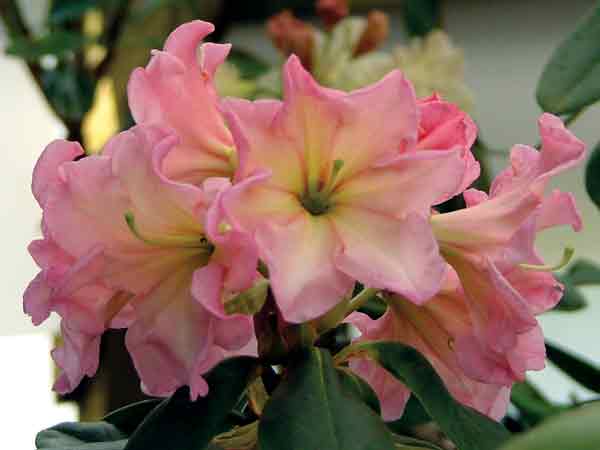
|
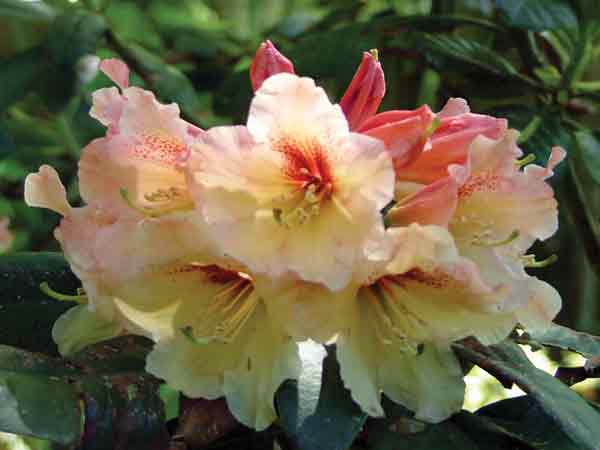
|
|
|
A selection of unnamed seedling.
Photo by Stan Southerland |
A selection of unnamed seedling.
Photo by Stan Southerland |
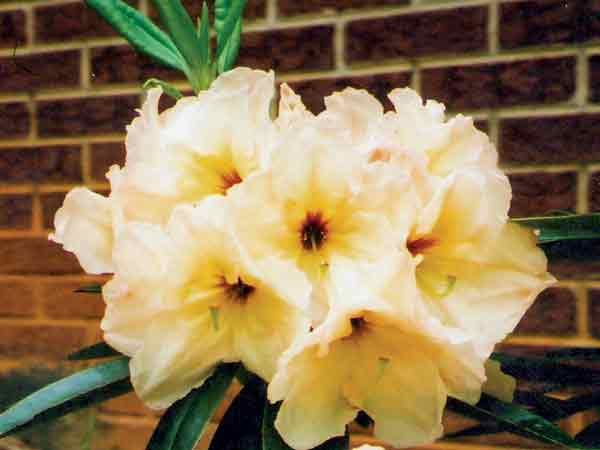
|
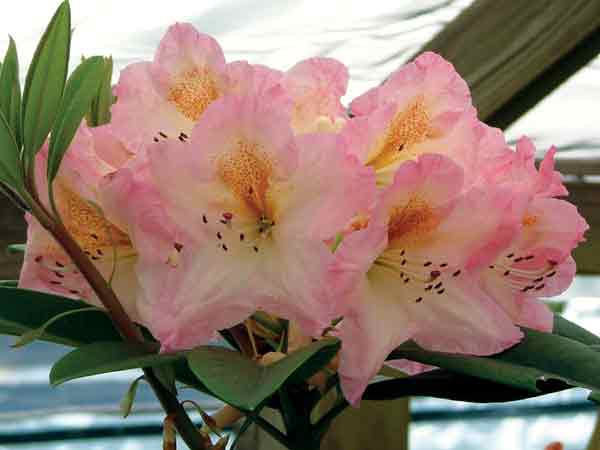
|
|
|
('Janet Blair' x
R. decorum
, yellow)
x 'Helen Vierra'
Photo by Delbert Brim |
A selection of unnamed seedling.
Photo by Stan Southerland |
For Brim, azaleas usually account for more sales than rhododendrons, but in 2008, he sold more rhododendrons than azaleas. He has about 370 of his own hybrids, in addition to named commercial hybrids that his nursery propagates, and he mainly sells unnamed seedling, which are accounting for more and more sales annually.
Brim started hybridizing about 18 years ago when he became interested in creating his own varieties. "I wish I had started when I was sixteen," Brim remarked. He makes 16 to 18 crosses a year and grows on 20 to 50 of each cross. As seed parent, he uses the plant that he considers to be either the best plant or that has been proven to be a good parent. His friend Marshall Stillwell notes that "he chooses the best of the best" in his breeding program, while Brim says "I like to try something new every year." However, he still prefers to use a few specific hybrids as regular parents, as they have proven to be very successful. An example of a preferred parent is 'Helen Vieira' [Grierosplendour Group x (white-flowered R. fortunei seedling)]. This hybrid has large purplish pink flowers with a deep red throat, which frequently also gives its progeny large flowers with a huge dorsal red blotch. This plant is a product of Dr. Robert Means's hybridizing, who was a past Piedmont Chapter President (1998 - 2002) and both Alternate Director and Director for District 10 (1998-2002). He also authored several articles for the ARS Journal.
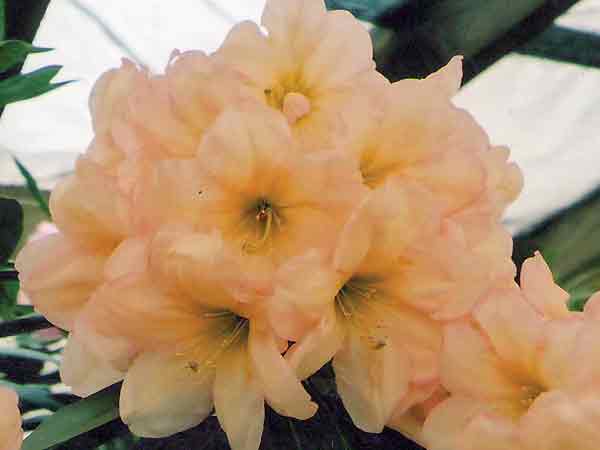
|
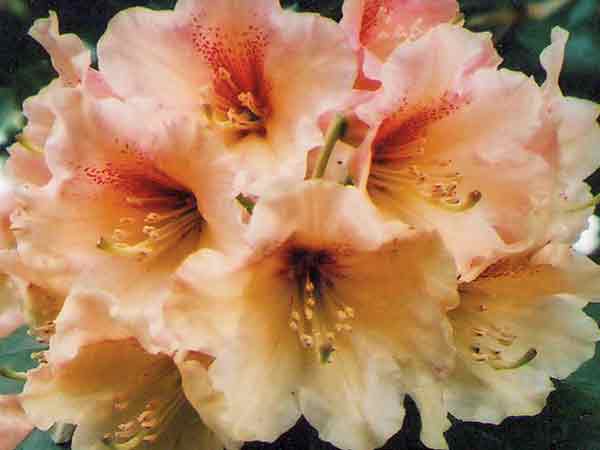
|
|
|
'Eye Catching' x 'Helen Vierra'
Photo by Delbert Brim |
'Mary Belle' x 'Helen Vierra'
Photo by Delbert Brim |
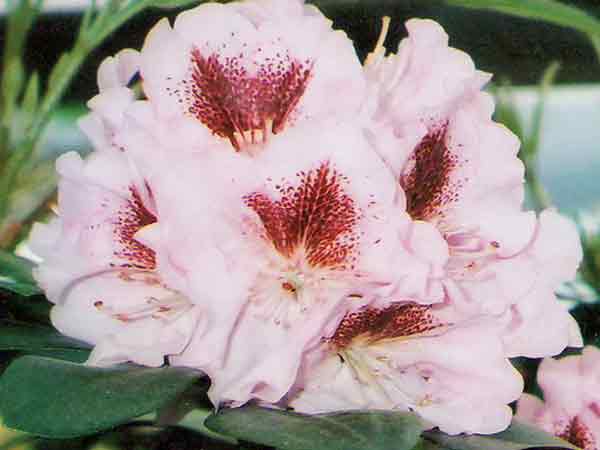
|
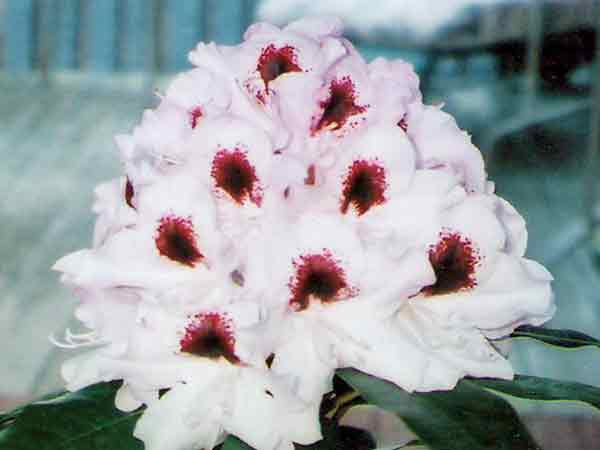
|
|
|
'Janet Blair' x 'Whitney's Late
Orange'
Photo by Delbert Brim |
('Tiana' x 'Anah Kruschke') x 'Jonathan Shaw'
Photo by Delbert Brim |
Since much of Brim's growing is done in pots, many of his hybrids have not experienced real world conditions, i.e., being planted in the ground and surviving weather, insect pests and various fungal diseases that plague his part of the southern USA (Zone 7a). To remedy that, five years ago he planted a nearby steep hillside with his hybrids to see how they perform. He has also built in the middle of a pasture two very large earthen mounds or berms, that while exposed to the elements, have an irrigation system. These mounds will be planted with many of his hybrids. Although this is not one of the hottest areas of the south, temperatures still frequently reach almost 38° C (100° F) every year. This past year the area reached a low of -16° C (3° F) with little or no damage to the hillside plants.
Delbert Brim is a gregarious and friendly man whose enthusiasm is infectious. He obviously enjoys not only the planning of hybrid crosses and growing on of the plants, but also interactions with people that visit his garden. "Just getting to see their beauty and see how pleased other people are when they see them" means a lot to Brim, "You meet a lot of good people. I have people that come to walk around just to have a look, and if they aren't able to walk, I get the golf cart and ride them around." If you can visit his nursery, you will definitely leave with a smile and probably also with several plants!

Stan Southerland is a member of the Piedmont ARS Chapter.
